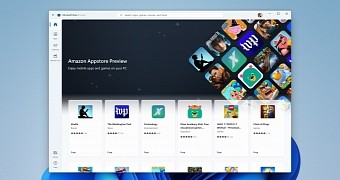The Android app support is one of the biggest new features supposed to come in Windows 11, but as everybody knows already, it was missing at launch when the new operating system became available for the first production devices earlier this month.
Microsoft just needed more time to make sure everything was running properly, with the company promising to release it for insiders later this year.
And today, the software giant officially announced that U.S.-based insiders can finally try out Android apps on their Windows 11 devices as an early and limited test before the same feature is expanded to more users out there.
The feature is available on eligible devices with Intel, AMD, and Qualcomm chips, with Android apps available right in the Microsoft Store thanks to the Amazon Appstore.
“Our new Microsoft Store search experience delivers the best results available, regardless of the technology used to build an app, because we are committed to offering you choice when more than one option is available. And when you’re ready to download an Android app, the Amazon Appstore will guide you through the rest of the flow and get you on your way,” Microsoft explains.
Limited number of apps
At this point, however, the number of apps available for testing is very limited, as Microsoft still wants to make sure that everything is working according to the plan.
The company says the new feature is powered by the Windows Subsystem for Android, which was actually discovered in the Microsoft Store earlier this month.
“To enable these types of experiences, we are introducing a new component on top of Windows 11 called Windows Subsystem for Android™, which powers the Amazon Appstore and its catalog. The Subsystem includes the Linux kernel and the Android OS based on the Android Open Source Project (AOSP) version 11,” Microsoft explains.
“It is distributed through the Microsoft Store as part of the Amazon Appstore install, which will allow users to stay updated over time as we continue to add support for more APIs, capabilities, and scenarios. The Subsystem runs in a Hyper-V Virtual Machine, like the Windows Subsystem for Linux. It understands how to map the runtime and APIs of apps in the AOSP environment to the Windows graphic layer, the memory buffers, the input modes, the physical and virtual devices, and the sensors.”
At this point, there’s still no ETA as to when this highly anticipated feature could launch for production devices.

 14 DAY TRIAL //
14 DAY TRIAL //